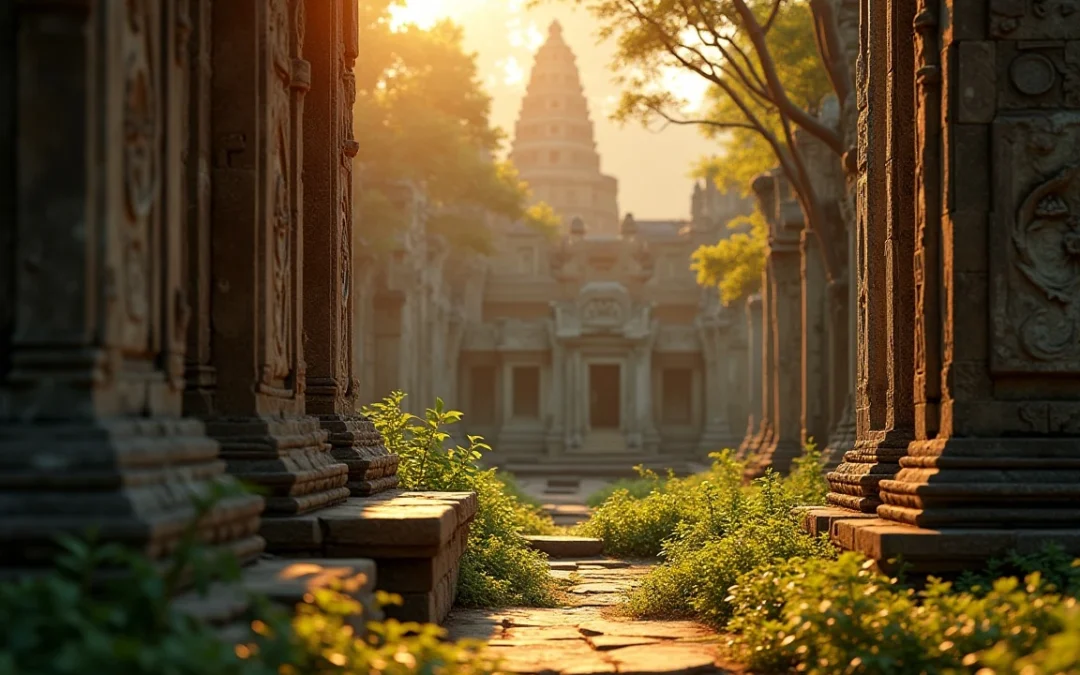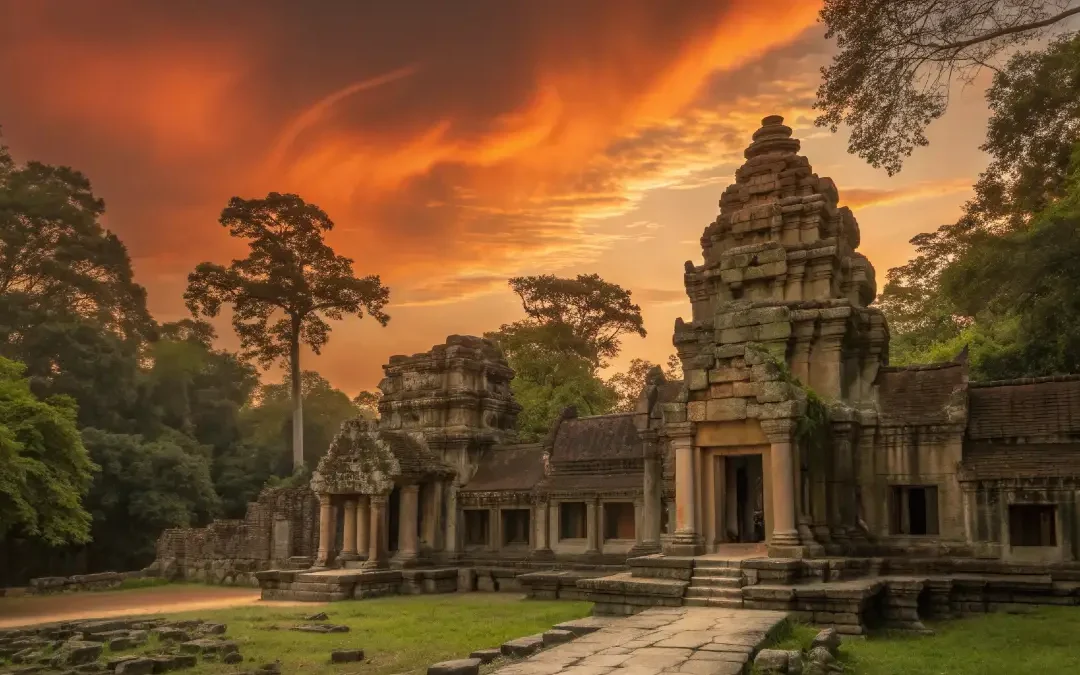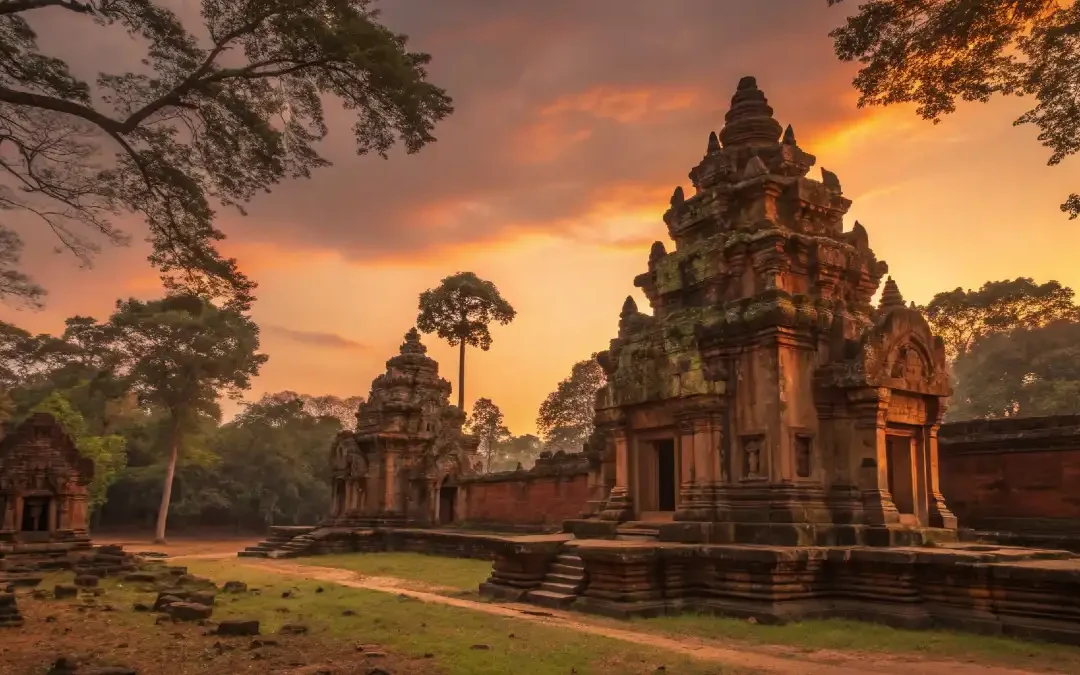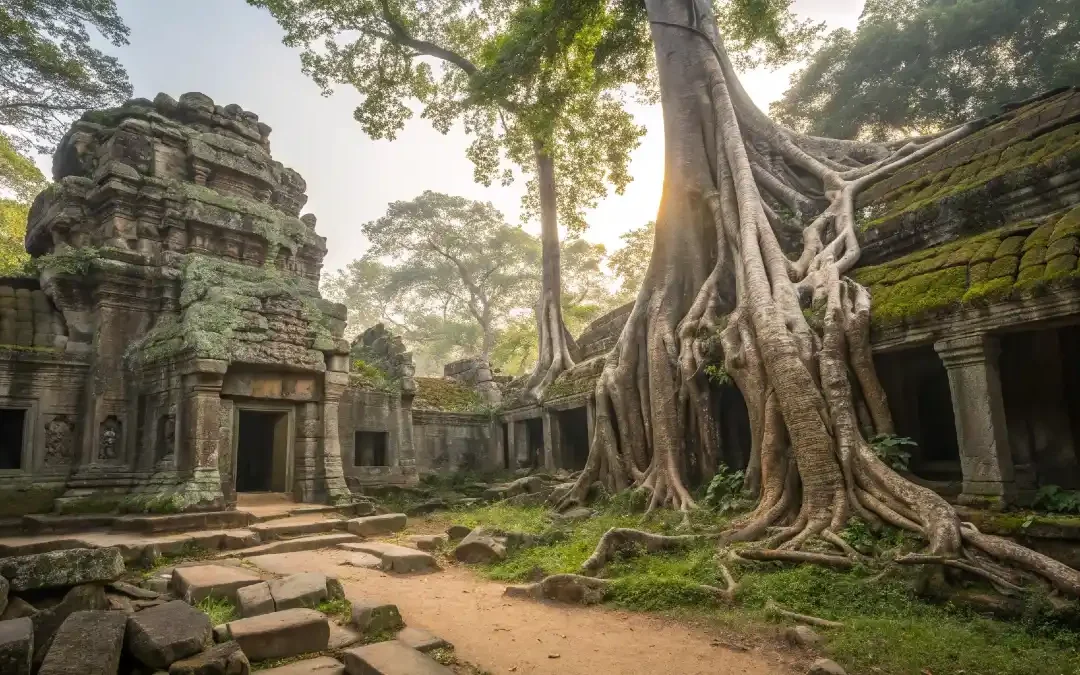Travel
Angkor temple bike tour packlist: stay cool & respect
The essential to remember: A well-prepared Angkor bike tour packing list combines moisture-wicking clothing, sun protection (SPF 30-50 sunscreen), and bike-specific gear like repair kits for smooth rides. Prioritize temple-appropriate attire and a secure bag for hydration and valuables. This balance ensures comfort, safety, and cultural respect while navigating Cambodia’s iconic sites efficiently.
Ever wondered if you’re overpacking or missing something crucial—like a compact repair kit or temple-ready attire—for your Angkor Temple bike tour? The scorching heat, strict dress codes at sacred sites, and rugged trails between ruins can quickly derail your plans. This tailored angkor temple bike tour packing list merges practicality with cultural awareness, covering sun-protective layers, breathable fabrics, and bike-ready essentials. Dive into expert-backed advice on optimizing your load, from securing valuables to navigating sudden monsoon showers. Unpack a foolproof strategy to conquer dusty paths, beat the midday sun, and immerse yourself in Angkor’s splendor—without sweating the small stuff.
- Preparing for your angkor adventure on two wheels
- Essential clothing: balancing comfort, climate, and culture
- Sun and insect protection: your shield against the elements
- Logistics and security: carrying your gear and keeping it safe
- Hydration, Snacks, and Other Personal Essentials
- Your Complete Angkor Bike Tour Packing Checklist
- Final Tips For A Memorable Ride Through History
Preparing for your angkor adventure on two wheels
Cycling through Angkor’s vast temple complex blends physical challenge with cultural discovery. Success depends on a packing list balancing practicality, cultural respect, and cycling readiness. Heat and humidity demand breathable fabrics to prevent exhaustion, while temple dress codes require covering shoulders and knees—overlooking this risks entry denial or cultural missteps. Mechanical preparedness ensures minor bike issues don’t disrupt your day; a single oversight could turn adventure into hassle.
This guide draws on cyclist insights and local knowledge to highlight essentials. From hydration solutions combating dehydration to compact repair kits enabling self-reliance, we’ll cover gear optimizing your experience navigating Angkor’s landscapes. Discover what makes this journey unforgettable—and how to prepare for it flawlessly.
Essential clothing: balancing comfort, climate, and culture
Lightweight and breathable fabrics for the ride
Cycling in Cambodia’s heat requires technical fabrics. Cotton retains sweat, while synthetic materials like polyester and nylon wick moisture away, keeping you dry. Opt for moisture-wicking jerseys or cycling tops designed for hot weather. These garments dry quickly, resist odor, and withstand repeated use. PEARL iZUMi’s “Hot Weather Cycling Jerseys” exemplify this, blending breathability with durability for long rides under the sun. Look for fabrics with UV protection to guard against sunburn during extended exposure. Mesh panels or laser-cut vents in shirts improve airflow, reducing sweat buildup during intense rides.
Respectful attire for sacred sites
Angkor’s temples demand modesty. Shoulders and knees must stay covered—tank tops and shorts are prohibited. Lightweight long pants or ankle-length skirts paired with long-sleeve shirts meet the rules. Sarongs or large scarves work as over-layers but pose tripping risks on steep stairs. Prioritize breathable cotton blends; avoid dark colors that absorb heat. For extra flexibility, pack a foldable shawl to cover your head or shoulders when needed. Remember, guards enforce the dress code strictly—opt for light-colored clothing to stay cool and compliant while respecting cultural norms.
Footwear for pedaling and exploring
Choose shoes that handle both cycling and temple treks. Sturdy sports sneakers or trail sandals with grippy soles outperform flip-flops, which slip easily and cause blisters. For dedicated cyclists, SPD-compatible shoes ease pedaling, but pack lightweight sneakers for temple walks. Prioritize cushioning for uneven surfaces like Angkor Wat’s uneven steps. Avoid open-toed footwear to prevent dust irritation during rides. Consider sandals with heel straps for better stability on rocky paths. Break in shoes beforehand to prevent blisters during long temple explorations.
Sun and insect protection: your shield against the elements
The tropical sun and persistent insects at Angkor require careful preparation. Lightweight, high-performance gear ensures safety without compromising mobility during your cycling journey.
Guarding against the intense tropical sun
Angkor’s UV index regularly reaches extreme levels (up to 12), risking severe sunburn in just 15 minutes for fair skin. Prioritize sun protection to avoid heat exhaustion and skin damage.
- Sunscreen with SPF 50+ and sweat-resistant formula, reapplied every 2 hours
- A wide-brimmed hat or cycling cap worn under helmets for facial protection
- UV-protection sunglasses to combat glare and dust
- SPF lip balm to shield lips from cracking
Consider UPF 50+ Cambodia ScudoPro arm sleeves for breathable, moisture-wicking coverage. Their stretchy microfiber fabric offers 99% UV protection while staying cool in 35°C+ heat.
Dealing with mosquitoes
Mosquito activity peaks during temple visits at dawn and dusk, with AccuWeather rating the risk as “extreme.” Dengue transmission remains a concern, though bites often go unnoticed.
- DEET-based repellent applied to exposed skin and clothing
- Lightweight long sleeves and pants for evening rides
- Head net for high-risk moments near water features
While some travelers report minimal issues, proactive measures prevent potential health risks. Combine repellent with strategic clothing choices to minimize exposure without overheating in humid conditions.
Cycling-specific gear for a smoother ride
Angkor’s sweltering heat and temple etiquette demand strategic packing. Prioritize lightweight, breathable materials that balance comfort with cultural respect. A well-chosen repair kit and protective gear can mean the difference between seamless exploration and roadside delays. Equipment reliability matters as much as sun protection on the 15-mile temple circuit’s rough terrain.
Gear for your comfort and safety
Padded cycling shorts are a must-have. Chamois padding reduces pressure on sensitive areas, while moisture-wicking fabric keeps you dry. Pair them with synthetic shirts (long sleeves for temple visits) to cover shoulders and knees—a dual-purpose choice that respects modesty while shielding skin from UV rays and sweat. Women may prefer convertible pants for temple-road versatility.
Cycling gloves prevent blisters and improve grip. Choose padded, breathable models with mesh panels. Fingerless gloves suit Siem Reap’s heat. Helmets require special attention: rentals often have poor fit and hygiene. Bring your own ventilated, adjustable model with MIPS technology for added impact protection in hot climates.
The essential on-the-go bike repair kit
- A mini-pump compatible with Schrader valves
- A puncture repair kit (tire levers, patches, glue)
- A compact multi-tool with 4-6mm Allen keys and screwdrivers
- A spare inner tube matching common rental sizes (26” or 27.5”)
Don’t underestimate this small investment. Rental bikes often lack proper repair tools—a fact 80% of visitors overlook. A puncture at sunrise could cost $150+ without basic fixes. Carrying essentials turns disasters into 15-minute pit stops, letting you focus on Angkor’s views instead of roadside stress. Attach the kit to your bike for instant access during Cambodia’s frequent tire challenges.
Logistics and security: carrying your gear and keeping it safe
Choosing the right bag for your day trip
For a cycling tour of Angkor Wat, your choice of bag impacts comfort and accessibility. Consider these options:
- Handlebar bags: Ideal for quick access to water, sunscreen, and snacks. Models like Revelate Pronghorn are 100% waterproof, while others need a rain cover. Their position keeps your back cool but may limit storage space.
- Backpacks: Versatile for essentials like maps and cameras, but they can cause back sweat. Opt for breathable designs with a built-in rain cover.
- Panniers: Offer more space for extra layers or tools. However, they add weight and are better for longer trips.
Always use a waterproof cover or dry sack for sudden tropical rains—common between May and October. Store electronics in sealed bags to prevent humidity damage.
Securing your bike and valuables
Securing your bike and belongings is crucial. Follow these tips:
- Use a reliable lock: Bring a U-lock or chain. Thieves can steal bikes left unattended, especially near secluded temples.
- Park smart: Leave your bike near motorbike zones where security guards patrol. Avoid isolated spots.
- Protect valuables: Keep your passport, cash, and phone in a hidden waist pouch. Never leave them in the bike basket.
- Waterproof storage: Use dry sacks for electronics. Humidity and sudden rains can damage your devices.
When entering temples, store modest clothing (like a sarong) in your main bag for quick access. Keep your bike locked at all times to avoid theft.
Hydration, Snacks, and Other Personal Essentials
Staying Hydrated and Energized
Angkor’s blistering heat—often exceeding 35°C—demands relentless hydration. A reusable water bottle with a wide mouth simplifies refills, especially since bottled water is readily sold by vendors for $0.50–$1.50 per half-liter. However, plain water isn’t enough. High humidity accelerates electrolyte loss through sweat, making electrolyte powder packets a game-changer to prevent cramps and fatigue. Pair this with non-melting snacks like dried fruit, salted nuts, or cereal bars. These lightweight options avoid the mess of perishables and provide sustained energy for navigating Angkor’s sprawling 400 km² site.
Must-Have Personal and First-Aid Items
Every cyclist’s bag needs compact, high-utility items to tackle both the heat and cultural nuances of temple visits. Prioritize these:
- A small first-aid kit with plasters for blisters, antiseptic wipes to clean wounds, and pain relief for muscle strain.
- Hand sanitizer and wet wipes for post-ride hygiene, especially before handling food or entering sacred spaces.
- A quick-dry towel or bandana—dampened with water, it doubles as a cooling cloth or a modesty shawl for temple entry.
- A fully charged smartphone (in a dust-proof case) for navigation and capturing temple details.
- A portable power bank (5000mAh minimum) to keep GPS apps running and avoid getting lost on remote trails.
These items address more than emergencies. A bandana can cover your shoulders for temple access or wipe sweat after climbing steep stairs. A power bank ensures you’re never stranded without Google Maps in areas with spotty coverage. Even hand sanitizer becomes crucial for hygiene between temple touchpoints and snack breaks. Every choice bridges practicality, safety, and cultural respect in this iconic cycling destination.
| Category | Item | Key Reason for Your Bike Tour |
|---|---|---|
| Clothing | Moisture-wicking shirt/jersey | Stays dry and comfortable during hot rides. |
| Clothing | Temple-appropriate pants/skirt (covering knees) | Essential for temple entry—non-compliance = denied access. |
| Clothing | Scarf or Sarong | Covers shoulders for temples and adds sun protection. |
| Protection | High-SPF Sunscreen | Shields from intense tropical sunlight. |
| Protection | Hat and Sunglasses | Protects face and eyes from sun/dust. |
| Protection | Insect Repellent | Prevents mosquito bites during early/late rides. |
| Bike-Specific | Padded Cycling Shorts | Boosts saddle comfort for long temple routes. |
| Bike-Specific | Basic Repair Kit (pump, patches) | Fix flat tires fast—avoids trip disruptions. |
| Bike-Specific | Bike Lock | Secures rental bikes during temple walks. |
| Essentials | Reusable Water Bottle | Hydration is critical in Angkor’s heat. |
| Essentials | Small Backpack or Pannier | Carries essentials without slowing you down. |
| Essentials | Cash (small denominations) | For water/snack purchases en route. |
Your Complete Angkor Bike Tour Packing Checklist
This checklist covers Angkor’s heat, cultural rules, and cycling needs. Choose breathable fabrics. Pack modest clothing—temple guards enforce strict rules. Repair kits handle flats. Prioritize sunscreen, water, and a lock.
Scarves/sarongs work for sun and temple rules. Padded shorts boost comfort. Reusable bottles cut plastic. Carry small cash for quick buys—avoid card delays.
Final Tips For A Memorable Ride Through History
Exploring Angkor by bike offers freedom and connection to its ancient landscape. Focus on three priorities: pack smart, stay protected, and be respectful.
Pack smart with lightweight gear like moisture-wicking clothes, compact repair kits, and reusable water bottles. Use minimal bike storage—saddlebags or handlebar pouches keep essentials handy without slowing you down.
Stay protected from relentless heat. Apply high-SPF sunscreen, wear UV-blocking sunglasses, and carry 2 liters of water. A breathable, long-sleeved shirt doubles as sun protection and cultural compliance.
Be respectful by covering shoulders and knees at temples. Carry a lightweight sarong or scarf for quick adjustments. Modest attire honors sacred sites and prevents sunburn, blending practicality with reverence.
Cycling Angkor’s ruins lets you pedal past crumbling stones and feel history’s rhythm. With smart preparation, challenges fade, leaving only the wonder of discovery. Exploring Angkor’s temples by bike offers a unique blend of adventure and cultural immersion. With your packing list in check—prioritizing light, functional gear, sun and insect protection, and respectful attire—you’re ready to embrace the journey. Pedal through history with confidence, knowing you’ve prepared well. The temples await, and every turn of the wheel promises unforgettable memories.






0 Comments